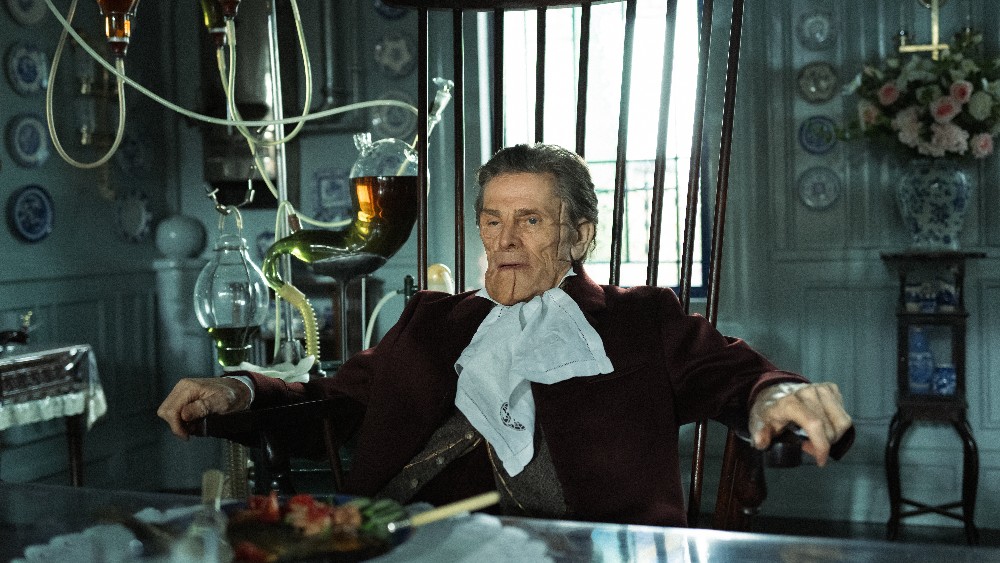
Yorgos Lanthimos’ new movie, Poor Things, is another wild and crazy movie from the Greek filmmaker behind The Favourite, The Lobster, and many other films. It reteams him with Emma Stone, playing Bella Baxter, a young woman with a child’s brain that has become the personal experiment of surgeon Godwin Baxter (Willem Dafoe) until she encounters Mark Ruffalo’s Duncan Wedderburn, a brash fop who sweeps her off to Lisbon for an adventure full of carnal exploration.
There are a lot of terrific crafts on display in Lanthimos’ latest, but surely one that really will stand out is the makeup and hair design by Nadia Stacey, who also worked on The Favourite (for which she won a BAFTA award). She also received an Oscar nomination for her hair and makeup work on Emma Stone for 2021’s Cruella. Stacey has been working in the makeup department of various, mostly British productions for the past seventeen years, and she’s a name you’re likely to continue seeing more of as more of her films get attention.
But first, before we get to our interview with Ms. Stacey, we have a few words from a very special guest, since Below the Line also spoke to actor Willem Dafoe about his character, Godwin Baxter, and how working with Stacey’s makeup team influenced how he played the character.
“The design is beautiful. I think it works well, in the story, and I felt, it was still flexible, but it also functioned as a mask,” Dafoe told Below the Line about the prosthetic work required to turn him into Godwin. “I didn’t feel like myself, I didn’t look like myself. Whenever you have that kind of very tangible change, it really helps with the pretending; it makes room for something else to happen. Every time I sit in that chair, it’s like a preparation to enter that character, because I go away, and this other thing emerges. They developed it in steps, and they shared some of that with me. I weighed in, I don’t think substantially, but because essentially, they were very good with the direction that they took.”
“All these elements – the design, the world, it’s so complete that it really helps me to do what I need to do. It tells me what to do,” he added. “It conditions everything I do, because it’s so complete, it’s so specific. It doesn’t point or remind you of anything, it is a thing unto itself, so you have to shape yourself to that world to that situation. To do that is always quite thrilling, because you’re experiencing new feelings, you’re experiencing new thoughts, you’re having a different perspective. When you’re in that kind of state, I find it’s the most creative state to be in, and the most alive state.”
And now, our interview with Nadia Stacey, though we’ll have even more with Dafoe below.
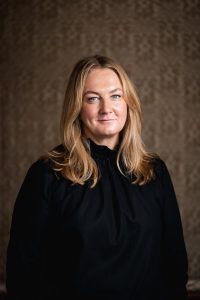
Below the Line: This must have been quite a different experience for you than working with Yorgos on The Favourite. When does he first mention this project to you, and what was the first thing he told you about it?
Nadia Stacey: I had an email from him and Emma, a joint email, to say, “We’re making our next feature film, and we would love you to come along and join us again. It’s called ‘Poor Things.'” I have the book, so I sent a picture back of me holding the book, and my thumbs up. [laughs] I didn’t even need to know any more about it. I was like, “Absolutely. I’m in.” That was probably just before the lockdown, something like that, early 2020.
BTL: Since you already had the book, when you heard they were making it, did you already have some idea on how to approach Godwin or Bella should look or any of the characters?
Stacey: No, I don’t think so. I’d read it, and then, I read it again, and then obviously got the script as well. I think it was so open to interpretation; it could be so many different things. They all could look so different, and I just knew that, being a Yorgos movie, there was going to be huge scope to be really creative.
I went in really early on and saw some very early concepts that [Production Designers] James [Price] and Shona [Heath] were doing, the production designers, and I kind of got a feel that we were doing something very different and creating very different worlds. That really started to get the brain ticking then of what we were going to do. It was quite a long road to get to, particularly with Baxter, with Godwin, what we were going to do with him, because he just could be so many different things, I guess.
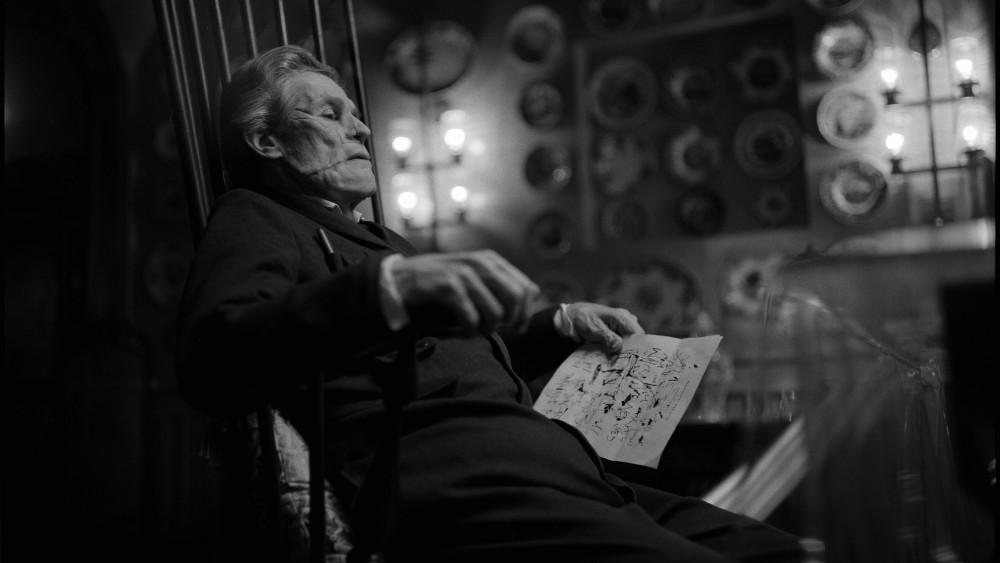
BTL: Was Tony’s screenplay very descriptive about the look of the characters?
Stacey: His scripts, they don’t go into huge detail of how they look, but there’s always something that gives you your anchor point. Particularly with Baxter, there’s lots of reference to when he talks about his father and what his father did to him and that his father operated on him and how Baxter works as well. You could start to piece together, maybe his father did certain operations and took certain pieces of his face apart and that kind of thing. That starts to give you a kind of idea of what we could do.
There’s a point when, I think, one of the medical students says, “He looks like a dog,” and a woman in the street is scared of him. It gives you little nuggets that you know it needs to be really impactful or slightly scary, but also with a backstory as well. And then, you come up with your own interpretation from that.
BTL: Have you ever done a full-on flat-out horror movie, or is this the closest to that kind of thing?
Stacey: I don’t think I have, and I don’t know how much I’d love it, because what I love about Baxter is you still see the man. [Bella] loves him, and there’s a very sad moment when you need to feel for him, and you need to have sympathy and empathy for him.
Even though he has a full face of prosthetics, I was always very keen to make sure that we saw Baxter and you see Willem. You need to see that, so I wouldn’t want to do anything too horror and scary, because I feel like you’d lose the person behind it.
BTL: How do you start? Do you meet with Willem, do you do a mold of his face to start from? Or are you drawing ideas on paper?
Stacey: I work with an amazing prosthetic designer called Mark Coulier, and he was on board with me on this. They did 3D scans of Willem’s face, and they also did molds of his face, and then, from there, they start to sculpt. We have concept artists as well that were providing lots of different art. We were given ideas, and then, at one point, I actually went to Shona, the production designer’s studio, and we almost did like a photo fit, where we went, “What if we took his ear off and moved it here?”
It literally was a cut and paste of his face, but actually, that kind of is what it needs to look like, be cut up and stuck back on and put together. Through all of those things, we eventually got the design, and then Josh, one of the prosthetic artists, our prosthetic supervisor, he sculpted the face, and then they made the prosthetics from there.
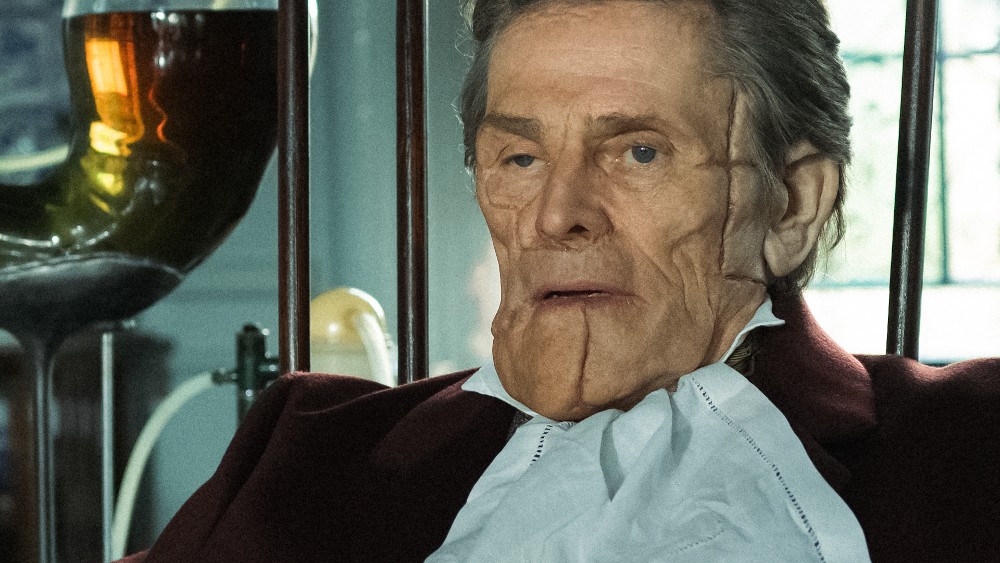
BTL: How did Willem feel about his face being chopped up and pieced back together?
Stacey: He was really up for it, and he was amazing. It was quite a prosthetic to go through as well. It’s like three hours every day in the chair, but he was very patient and really up for the design and very on board from the beginning.
[Note: A few more words from Dafoe himself on the process.]
“The pieces are quite intricate,” he said. “I don’t know how many pieces that were but maybe, I’m just guessing, let’s say 10 on the face, and then I also had some body prosthetics, which you don’t really notice – there’s one scene where you actually see them – but I’m wearing them and that affects how I move, it affects how the costume lays, it affects many things.”
When asked whether Dafoe would have rather had some way of keeping the make-up on from day-to-day rather than sitting in the chair every morning for hours, he didn’t think so. “It’s hard to keep up. It’s important to apply it every day, and then it’s kind of reborn,” he stated. “The pieces are uniform, but there’s always little painting, little patching, and a little blending that always makes it different each day. You have to make it new every day. It’s like a performer who has to reanimate their performance. They have a score for the performance in the theater, for example, and you’ve got a basic score. There are all kinds of theaters, but most theater performances, the performer has a score, because they’re performing it multiple times, and your job is to reanimate it every day. That’s a pleasure., and that’s something I know how to do. Somehow, the makeup has a parallel to that; it’s sort of important to remake it every day.”
BTL: I spoke to the production designers earlier, and they said that Yorgos wanted to make a movie like they would make it in the 30s, so how did that affect what you and your department do?
Stacey: On Yorgos’ movies, it’s very stripped back. I had the usual email that I got from The Favourite, as well, which said “no wigs,” Unless it’s meant to be a wig, we’re not allowed to use wigs, so I always have to come up with ways around that. He doesn’t like to see makeup that shouldn’t look like makeup, so you really do strip back anyway, and then start to find techniques.
I guess I do sort of go back to basics a lot, and when I think about the makeups I’ve done on The Favourite, and on this, it’s kind of very impactful but basic, apart from prosthetics obviously. When I did put makeup on Emma in the brothel, it’s done kind of naively, the same as Olivia in The Favourite. Everything’s done with very basic materials. That’s very much in your mind when you’re when you’re working on his films.
BTL: How do you do The Favourite with no wigs? I thought that was one of the standout things in that movie.
Stacey: On the men, we were allowed to do it, but on the women, I wasn’t allowed to use wigs, so I had to use hairpieces, and you have to incorporate them into their own hair. He wants it to look natural.
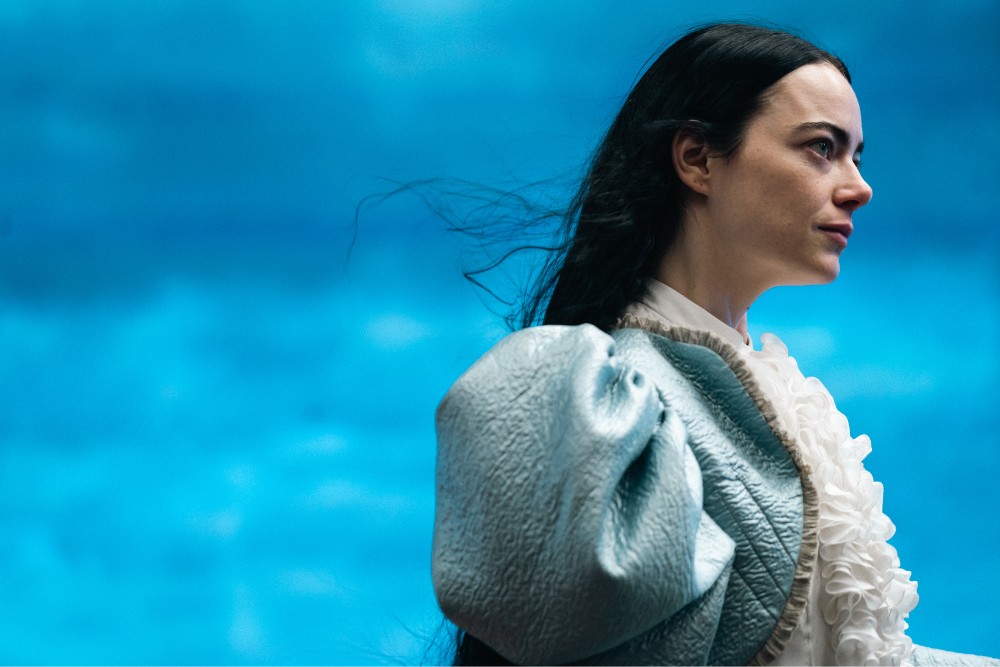
BTL: You’ve done other movies with Emma before, so in terms of designing Bella’s look for the movie and how it evolves throughout the story, are you and her and Yorgos sitting down beforehand and figuring these things out? Are you doing the designs on your own, then meeting up with Emma to try it out?
Stacey: Kind of a bit of all of it, really. We never really get that much time to sit down, all three of us together. But Emma’s always very involved, and particularly on this, being a producer as well. She was very involved in all the creative process. There’s obviously a shorthand with [us] now. I know things that will work on her and what she likes and what will work, but in saying that – even looking at the movies I’ve done with her so far – everything works. [laughs] It’s a great canvas for me to work on, and she’s just very playful and experimental in terms of a look. She’s very open to let you try things, but Bella was somebody that we felt very strongly about how she should look, and yeah, we got very attached to her.
BTL: Obviously, this was prepped and probably shot during COVID, so how much time did you need to have to prep before going to Hungary to shoot?
Stacey: We had to kind of split prep, because I came on board and saw some very early concepts the production designer were doing, and then we had a lockdown, so things were still kind of percolating through that lockdown. And then we came on board again. I normally get seven, eight weeks, something like that, with something like this, to get it all together. I probably went out to Budapest maybe four or five weeks before we started shooting just to meet my team and get all that process going out there and start making things. So yeah, we had the luxury of a split prep, because we started before the lockdown.
BTL: Do you bring some of your own artists or do you find people there? How do you put together a team when working in a different country?
Stacey: I had a small team came over with me from the UK that always works with me, but then we had an amazing team in Hungary that filled the rest of the main team, and then they covered all of our crowd and our background artists and helped within the prosthetics team. They were incredible, yeah, really good team in Hungary. There’s a very good film industry and system set up there, so they’re very skilled. It’s a really well-oiled machine.
BTL: How closely are you working with costume department to help create these characters and their dynamic looks?
Stacey: Always. I mean, it’s one of the closest relationships for me with costume, and that needs to really be in sync. But the visuals all over for myself, [Costume Designer] Holly [Waddington], James and Shona, all of us. It was a very specific, unique world that we were creating, and everything needed to work within it. Holly and I work really closely on lots of things.
Swiney [played by Kathryn Hunter] is a really good example. Holly really wanted to cover her body a lot of the time. She wanted to make her look like an armchair at times with big costumes. But then, there’s a moment when she comes in just a corset, and I’ve covered her from neck down in tattoos. Holly and I sat and worked out times when we would be able to show that. Even down to detail on smaller characters, we worked really closely together.
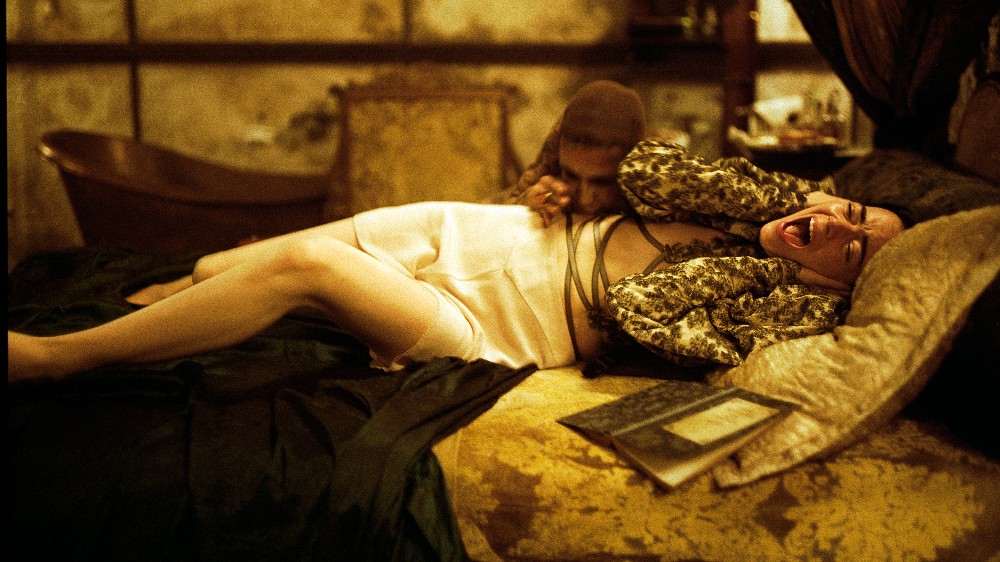
BTL: Were all those applied tattoos? I just assumed he found an actor who happened to be covered in tattoos.
Stacey: No, there were about 150 specifically designed tattoos that were all individually put on. They’re all designed for around Swiney’s world. She has French names and sailors that might have passed through the brothel, so they were all designed for her.
BTL: How long did it take to apply all those tattoos for that one scene?
Stacey: A couple of hours, I would say. I remember it being really, really cold, and I remember I had lots of heaters on, because she obviously had not many clothes on, and we had to have her sit there for two hours while we put these tattoos on her. It was a couple of hours, so it was probably good for her [that] it was only one scene that we see them.
BTL: What about some of the other characters played by Jerrod Carmichael, Margaret Qualley, and Christopher Abbott. How much time do you spend with them to realize the looks for those characters?
Stacey: Each have as much time as the rest, really. Obviously, somebody like Baxter with the prosthetics, it’s a long process, but as much time is put into all those characters. It’s as important that they have their own individual looks. Chris Abbott was a really great example of that. He comes in right near the end of the movie, but he comes in with such force. He’s a very strong character, and I knew that the sets were going to look very different where he lived. There’s this real meanness to him that needed to be severe, his look, so that hairstyle is cut really short on the sides and severe and his facial hair is all perfect. He has a small scar on his cheek and the scarring on his head later on, so there’s a lot of work even for characters like that.
Mark Ruffalo’s character, the demise of his character throughout, from his perfect hair and facial hair in the beginning to the end, is a real change in how he looks. Even with Ramy [Youssef], his character comes up in the world by the time we come to the end of the movie. His costumes start to get neater, and so his hair gets neater. We map out every single character and every single scene and what we could do with them and how we could change them.
BTL: Speaking of no wigs, does that mean the actors are walking around with these strange hairstyles all the time, because it’s easier to just leave it like that?
Stacey: When we finally cut Chris Abbott’s hair is so severe, and we did this facial hair on him that was really severe, and then I remember he was going to do some European trips while he was in Hungary. He was going to Paris and to Italy and he had to go off with that hairstyle. [laughs] I bet people were wondering what he was doing. When they come onto a Yorgos film, most of the time they’re like, “Do whatever you want. Let’s do it. Let’s go for it.” So yeah, we were lucky.
Poor Things will open in select cities on Friday, Dec. 8, and then expand wider on Dec. 22.
We’ll have more interviews from the movie, including one with the costume designer, cinematographer, composer, and production designers, but we’ll leave you with one last bit from Dafoe, talking about the film’s director, Yorgos Lanthimos, and his ability to be heavily involved with all aspects of the filmmaking:
“[Poor Things] is basically a film that just all the elements work very well together, and for me as an actor helped me a great deal. I think that has a lot to do with Yorgos basically being a polymath; he knows many things about many different fields. He knows architecture, he knows music, he knows dance, he knows painting. It’s incredible. He was working with each department in a very close way. I think some directors, there are elements they aren’t really interested in, and they kind of defer to the department head, and let them run with it and then have a reaction to it. I felt like he’s in with them every step of the way, and just everywhere a real happy collaboration.”





